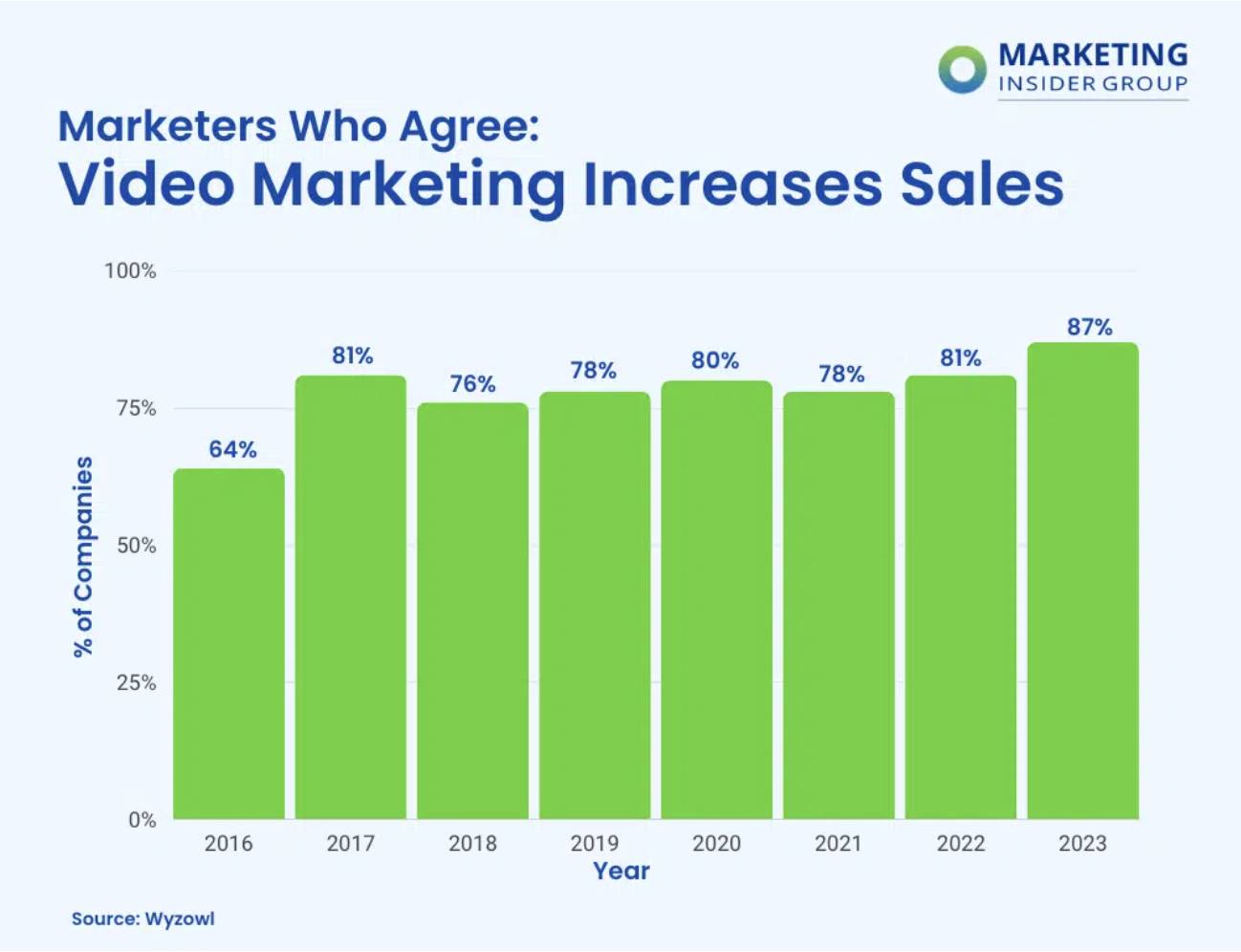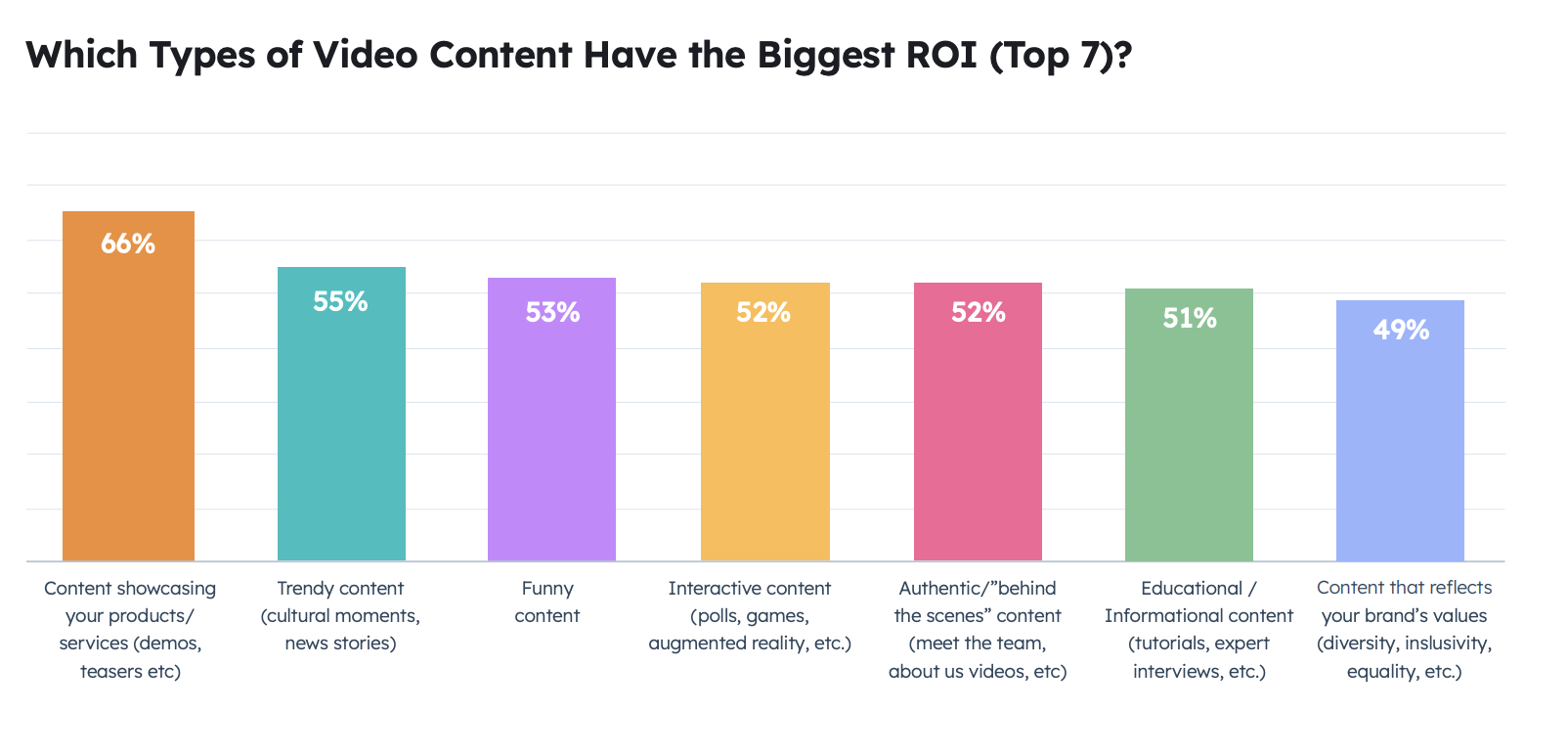Recently, I watched a social media video that said people don’t look at pictures anymore, so they’ve begun posting their pictures in a video format. Then, the creator played a couple-second long video of a still image with background music.
While the video was meant to be funny, it held the truth about the direction of digital marketing trends. But just how much truth?
Truth: people are increasing their video consumption.
False: Images, written content, and other formats aren’t relevant anymore.
While video is everywhere in digital marketing, it can never replace your other content marketing strategies.
Learn how to find a balanced marketing strategy that leverages the popularity of video while rounding out your marketing with other media formats.
Key Takeaways:
According to HubSpot’s The State of Video Marketing in 2023 playbook, video has become part of 81% of company marketing budgets. Of those marketers, the top benefits they saw from using video include:
Marketers who use video also saw a boost in their revenue and sales.

Image from Marketing Insider Group
What makes video so effective in marketing?
Because video involves more senses than other media formats – it’s more immersive. Your audience isn’t just reading or listening to information. They’re watching, hearing, and reading, which holds someone’s attention longer and evokes a stronger emotional response. Being able to engage your audience also builds trust and loyalty with them.
Additionally, using so many senses allows marketers to share more information in less time. For example, showing a diagram of the buyer’s journey alongside a verbal description takes a few seconds versus reading a paragraph describing the same process.

Image from HubSpot
With all the benefits of video, it’s still not the golden ticket to marketing. You need other marketing formats to stay on top of digital marketing trends. Most importantly, you should devote a large portion of your budget to written content.
Here are four ways written content performs better than video:
While video can boost your content’s ranking, you need written content to rank in search engine results. In 2023, search engine algorithms can’t search through videos like it does written content to identify its topic and show it in relevant searches.
So, if you want your video content to appear in search results or drive relevant traffic, you’ll still need those quality blog posts, well-written web pages, and optimized video descriptions.
The best format for lead generation depends on your audience. A Gen Z clothing brand will probably see the most leads from short-form video content. However, if you’re a B2B business, you’ll generate more leads through blog posts.
Research your audience and understand what format they’re engaging with before deciding the best way to capture relevant leads, as many leads still prefer written content.
Written content takes less storage space than video content.
Your media’s size impacts your website load speed and which devices can view it.
A simple yet powerful text blog post minimally impacts your website’s load time, and audiences can view it even with a spotty internet connection. A text post also takes less space when your readers download or share it in email.
An effective marketing campaign relies on regularly published content.
Written content costs less and takes less time to create, which means you can build a more regular content calendar. Regularly published content will appear in more search results, target more lead pain points, and open more conversion opportunities.
More content also is vital to building authority and increasing brand awareness. Making a name in your industry is crucial as the Google algorithm is shifting more toward prioritizing authority and expert pieces than simply those with relevant keywords.
Are you ready to supercharge your marketing strategy? Use these tips to combine all your content formats to maximize your exposure and results.
Video Marketing Explained from Start to Finish
Having marketing videos in your content improves your SEO. So, consider embedding a YouTube video in your next blog post. It doesn’t have to be one you created yourself. Embedding relevant videos from third parties that aren’t competitors can boost the engagement of your content too.
Video can also clarify data-heavy content by providing visuals that explain complex concepts. That way, you can provide more information in less space.
Video on static and landing pages boosts your website engagement, ranking, and conversion. Some popular places to use video include:
You can use video, images, and text to mix up your social media strategy. If you’re sharing videos on your social media, I recommend sticking with your company’s videos so any traffic from clicking on the video returns to your website or video channel.
Even if you use video on social media, you’ll need a small written blurb to help the post show up on relevant feeds and entice readers to watch the video. The blurb is also where you’ll post any links to landing pages.
Live video allows you to interact with your audience in real time on channels like social media or through webinars. Live video is optimal for Q&A sessions, announcements, or interactive seminars.
Once the live video is over, you can keep seeing returns from the investment by saving a video recording. Then, you can use that video in your blogs, social media posts, and other content to continue bringing in leads.
Video may be rising in popularity, but the world needs variety. So, your audience will never only consume video content. There will always be a place for written content, images, audio, and every media in between.
Before going all-in with video or cutting your other marketing budgets, ensure you’re investing in a well-rounded digital marketing strategy for maximum results.